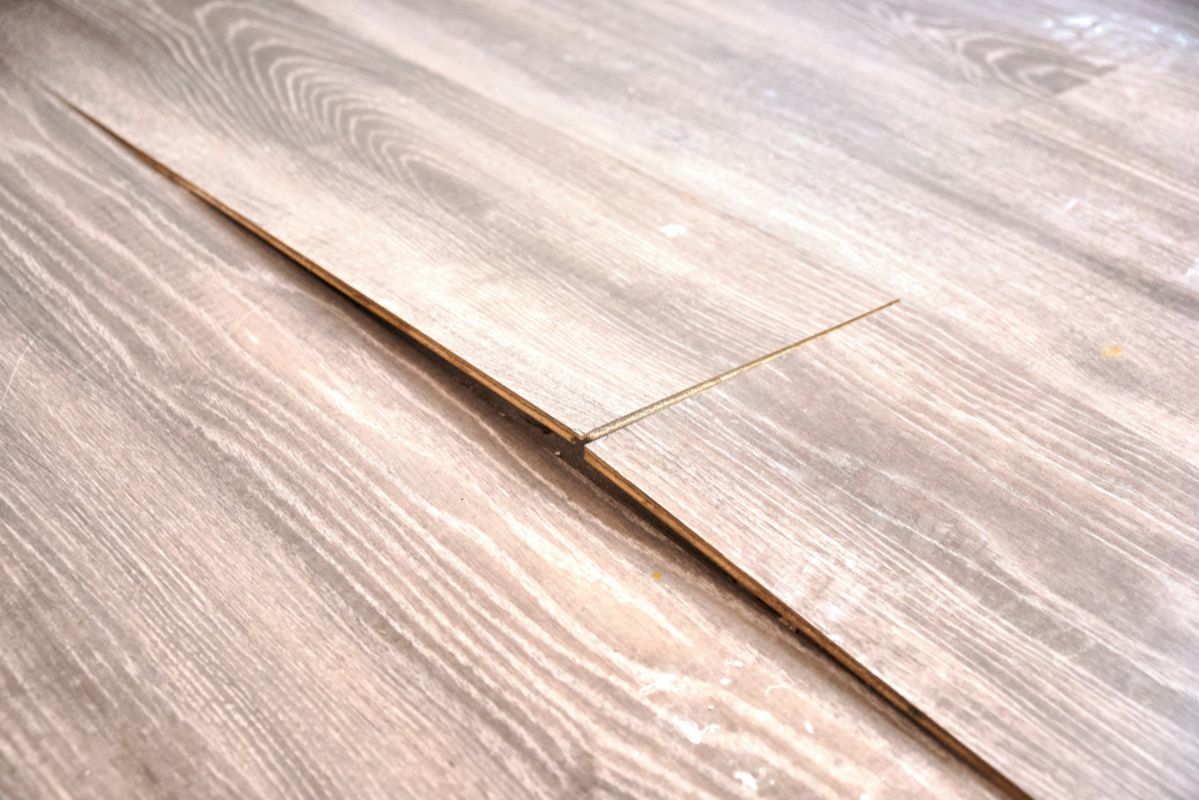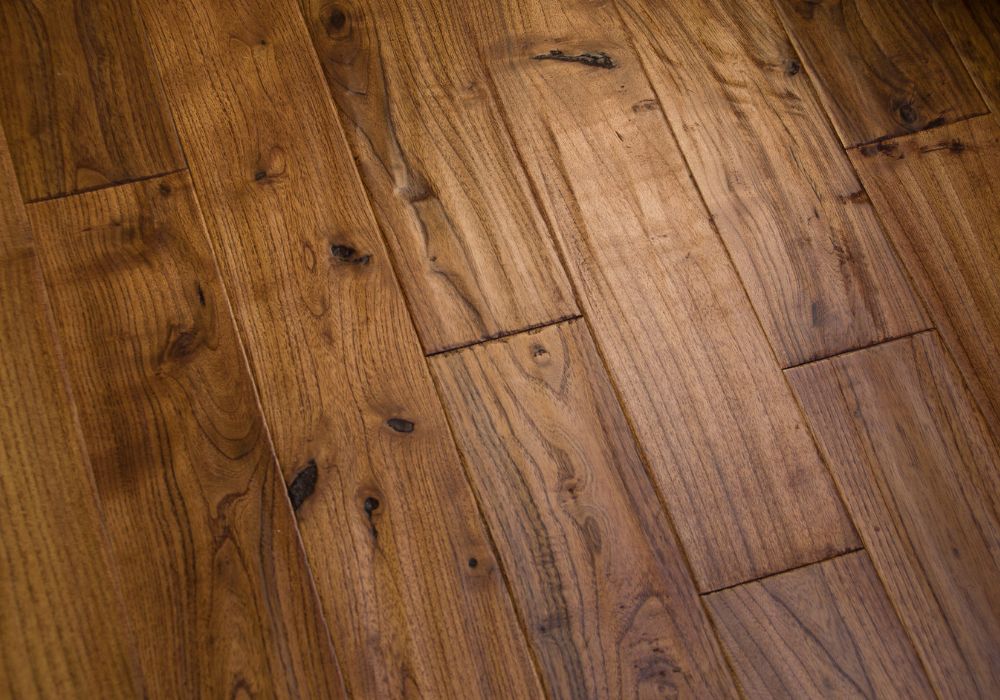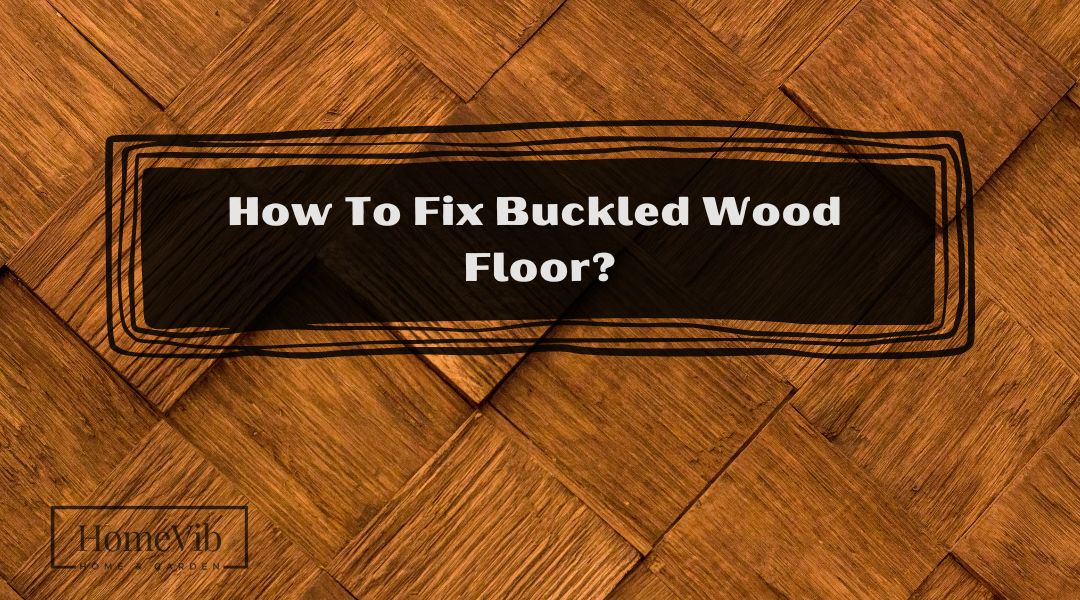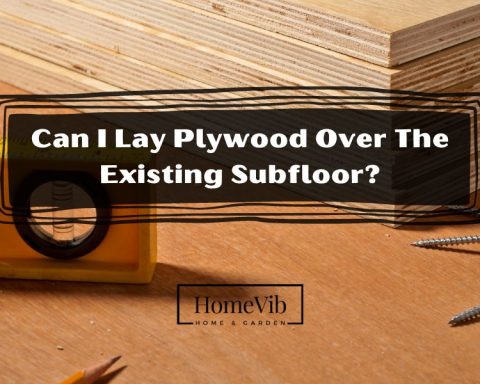When it comes to maintaining wooden floors, dealing with moisture is alarming. The resulting issue is commonly known as floor buckling.
These can transform your wooden floors into unsightly and hazardous surfaces.
But worry not, for it’s not a lost cause. You can restore your floor’s original splendor with patience and the right approach.
In this blog post, we will guide you through a step-by-step process of fixing buckled wood floors. Let’s dive into floor restoration!
To fix your buckled wood floor, your first move should be to assess the severity of the damage. In minimal buckling, place a hefty weight on the affected area.
Ensure the buckled area is dry by using absorbent materials and fans to remove moisture. For minor damage, 24-hour dehumidifier use helps boards regain their normal size. This eliminates signs of buckling or warping.
What Is Floor Buckling?

Floor buckling is an issue in hardwood flooring triggered by exposure to moisture. It is an intense reaction where the wooden flooring part ways with the subfloor.
In such situations, the wood physically detaches and rises. This then creates noticeable bulges or elevations that can span several inches. Thus, it may happen in one or multiple areas across your floor.
It compromises your space’s aesthetics and can cause safety hazards.
Here are some ways to prevent floor buckling:
- Controlling and repairing buckled floors require swift action. The primary step involves eliminating the moisture source causing the wood to swell.
- Repairing or replacing the damaged boards is another way. Keep in mind to refinish the entire floor to ensure a uniform appearance.
- Maintaining optimal humidity levels in your home and immediately addressing water leaks.
- Regular inspections and maintenance of hardwood floors can also aid in early detection. It allows for timely interventions that can save money and time in the long run.
What Causes the Floor To Buckle?
Wooden floors tend to buckle due to water and humidity levels. Additionally, it is also caused by inadequate acclimation and substandard installation.
Water Exposure
Water presence includes plumbing leaks, excessive mopping, or flooding. As a result, the absorbed water causes the wood to swell.
High Humidity Levels
If the humidity level is high, it can cause the wooden floorboards to absorb moisture. This absorption leads to expansion. Therefore, if the expansion is too great, the floorboards may start to buckle.
Inadequate Acclimation
If the acclimation period is rushed or ignored, the flooring may expand. It can be due to excess moisture or shrink due to lack thereof after installation.
Improper Installation
Poor installation can lead to buckling even with the right conditions and materials. This includes not leaving enough expansion gaps around the perimeter of the room.
Signs of hardwood floor problems often show up physically:
- Buckling: Raised sections of the floor, lifting several inches.
- Cupping: Edges of the boards are higher than the center.
- Crowning: The center of the board is higher than the edges.
- Gapping: Visible gaps appear between the planks.
Can Buckled Wood Floors Be Repaired?
Yes, buckled wood floors can be generally repaired. However, the process requires careful steps. Thus, a professional may best carry it out for more severe cases.
Here’s how the restoration generally works:
First, it’s crucial to identify and address the source of the moisture that led to the buckling. This might involve fixing any leaks to balance the humidity levels.
Second, once the moisture issue is dealt with, allowing time for the wood to acclimate is important. In some minor cases, this can lead to the wood naturally returning to its original state.
After removal, it’s essential to dry the area beneath where the buckled boards were. This can also be expedited using fans, heaters, or dehumidifiers.
Once dry, you can install the original boards or replacement boards. The new or replacement boards must be the same type and thickness as the original floor.
Lastly, the newly installed boards may require refinishing to match the rest of the floor. Overall, it will provide a seamless, consistent appearance.
How To Fix Buckled Wood Floor?
To repair a buckled wood floor, first, evaluate the damage extent. If minimal, apply a heavy weight on the buckled area. Then, dry the area thoroughly using absorbent materials and fans.
Step 1: Identify the Moisture Source
This could be a leaky pipe, high humidity, or water from the subfloor. Once you find it, fix the issue to prevent further damage.
Step 2: Dry the Area
You can use towels to mop up excess moisture and then a fan or dehumidifier to dry the space. This may take several days, depending on the extent of the moisture.
Step 3: Remove the Buckled Boards
You must remove the buckled boards if they don’t return to their original shape once dry.
Step 4: Dry the Subfloor
Once you have removed the buckled boards, dry the subfloor thoroughly. Use fans or heaters to speed up this process.
Step 5: Replace the Boards
Once the area is completely dry, it’s time to replace the buckled boards. Make sure to use new boards that match the type and thickness of your existing flooring.
Step 6: Refinish the Floor
After installing the new boards, you must sand and refinish the floor to match your flooring. If necessary, you may also need to refinish the surrounding boards.
How Do I Know If My Floor Is Buckling?
Detecting floor buckling can be simple as it shows physical changes to your floor.
Here are a few signs that could indicate your floor is buckling:
- Visible Lifts could range from just a few millimeters to several inches.
- Unlevel Surface – You might notice that walking across the floor feels uneven. Certain areas may feel higher or lower than the rest of the floor.
- Creaking or Popping Sounds – You might hear unusual creaking sounds when walking.
- Gaps Between – If gaps appear, the floorboards that were not there before.
- Changes in Floor Appearance – you might observe a change in the reflection of light off the floor.
If you notice these signs and suspect your floor may be buckling, it’s best to consult with a professional. Call them immediately to prevent further damage and ensure proper repair.
Will Warped Floors Go Back To Normal?

Yes, it’s possible for the flooring to regain its original shape and size. If the wood hasn’t gotten severe damage, the flooring can return to its normal dimensions.
This recovery happens when the wood’s moisture content is practically restored. However, the duration of this restoration process can significantly vary.
It could take weeks or months or extend over an entire heating season. It can primarily depend on the severity of the warp and environmental conditions.
It’s important to note that this process should not be generally rushed, and patience is key. Prematurely attempting to fix the warped floor could result in unevenness.
Sanding should only commence once moisture levels have returned to their regular levels. This will allow the wood sufficient time to stabilize.
Above all, ensuring a consistent, appropriate humidity level can help prevent warping. But if you do encounter one, consulting with a professional is always a safe option.









